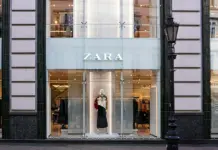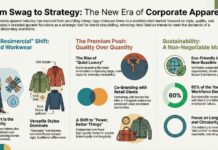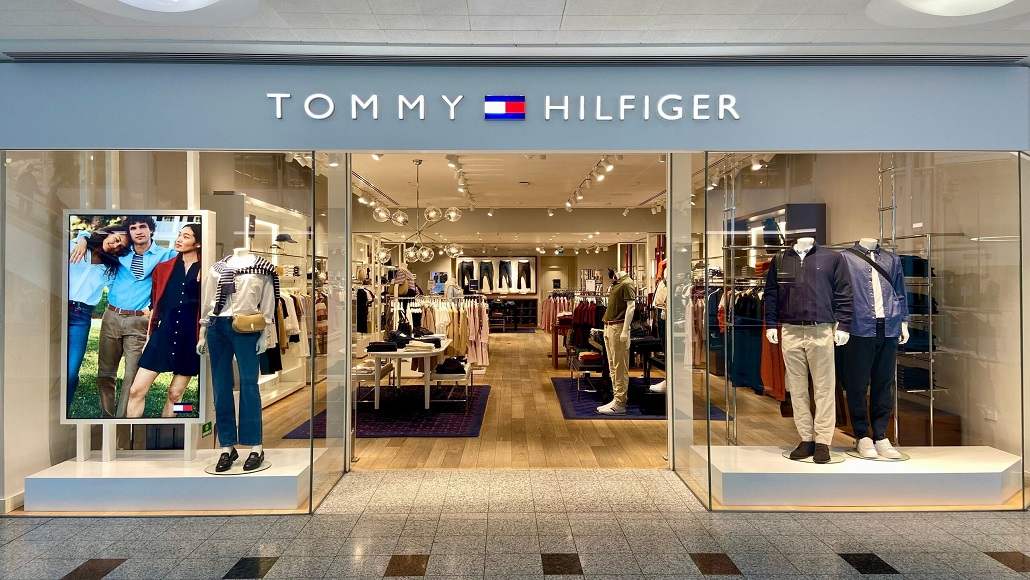PVH Corp, the parent company of Calvin Klein and Tommy Hilfiger, reported a 2% revenue increase to $1.98 billion in Q1 FY25. However, the company has revised its profit outlook for the entire year due to market uncertainty regarding tariffs.
Tommy Hilfiger experienced a 3% increase in revenue for Q1 2025, driven by growth in both the EMEA and Americas regions. The EMEA segment saw a 5% revenue boost, supported by both wholesale and direct-to-consumer channels. In the Americas, revenues rose by 7%, primarily due to strong wholesale sales.
In contrast, the APAC region faced a 13% decline in revenues during the same quarter, with an estimated 3% of this decrease attributed to the timing of the Lunar New Year holiday.
While Tommy Hilfiger’s brand revenues increased by 3% in Q1 FY25, Calvin Klein’s revenues remained stable compared to the previous year.
Revenue from PVH’s owned and operated stores fell by 5%, whereas digital commerce revenues from these platforms grew by 3%.
Stefan Larsson, CEO of PVH Corp, remarked, “In Q1, we continued to tap into the global consumer love for Calvin Klein and Tommy Hilfiger, delivering revenue growth versus last year and ahead of guidance. Calvin Klein saw one of its most impactful product launches in years with the Icon Cotton Stretch franchise, amplified by the viral Bad Bunny campaign. Tommy Hilfiger tapped into its lifestyle DNA with rich product storytelling around seasonal newness of Tommy classics to drive growth and built momentum for the brand’s collaboration with the biggest movie launch of the summer: F1 The Movie.”
PVH’s Key Metrics in Q1 FY25
PVH reported a net loss of $44.8 million for the quarter, compared to a net income of $151.4 million recorded a year earlier. This equates to a diluted net loss per share of $0.88, compared to earnings per share of $2.59 previously.
Gross profit also declined, reaching $1.16 billion, down from $1.19 billion in Q1 FY24. The gross margin fell to 58.6% in Q1 FY25, down from 61.4% in the same period last year, reflecting shifts in channel mix, increased promotional activity, transition costs linked to the in-house wholesale business for women’s products, and higher freight costs, along with additional discounts offered due to delivery delays for Calvin Klein products.
PVH recorded a loss before interest and taxes of $332 million, which included a $4 million negative impact from foreign currency translation, compared to EBIT of $205 million in the previous year. On a non-GAAP basis, EBIT was reported at $160 million, accounting for the aforementioned $4 million negative impact from currency translation, showing a decrease from $195 million in the prior year, largely due to declines in gross margin.
PVH’s Full Year and Second Quarter Outlook
Looking ahead to FY25, PVH maintains its revenue outlook, suggesting flat growth or a slight increase on a constant currency basis. The projected operating margin is approximately 8.5% on a non-GAAP basis, revised from an earlier forecast of flat growth or slight improvement compared to 10% for FY24.
Earnings per share (EPS) are expected to range between $10.75 and $11.00 on a non-GAAP basis, adjusted down from previous estimates of $12.40 to $12.75. This updated outlook considers the estimated net negative impact from existing US tariffs on imported goods, alongside an estimated positive impact of roughly $0.10 per share from foreign currency translation.
In Q2 FY25, PVH anticipates low single-digit revenue growth compared to Q2 FY24, with EPS expected between $1.85 and $2.00 on a non-GAAP basis, down from GAAP-based EPS of $2.80 and non-GAAP EPS of $3.01 in Q2 FY24.
Zac Coughlin, PVH’s chief financial officer, commented, “We are navigating a highly dynamic and uncertain macroeconomic environment that is impacting our industry, our consumers, and our business results. We are reaffirming our revenue guidance for the year but are decreasing our outlook for profitability and earnings per share to reflect that backdrop and the current performance of our business. Our focus remains on taking proactive measures, including investing in cut-through marketing campaigns and delivering increasing cost efficiencies through the execution of our Growth Driver 5 multi-year cost savings initiative, that will improve our trajectory in the second half.”
PVH Turnaround Plan Delivers “Promising” Results
Pippa Stephens, a senior apparel analyst at GlobalData, noted that Q1 “signals the success of its PVH+ plan, which aims to develop its key growth categories, increase consumer engagement, and improve efficiencies, and is an encouraging sign for the year ahead.” However, she pointed out that the more pessimistic outlook for profitability is due to the expected strain from tariffs, as the company has “not yet announced any price rises to counteract increased costs.”
She further noted, “The wider US apparel market remained resilient during the quarter, as many consumers pulled spending forward ahead of expected tariff-induced price rises, with sales anticipated to become more challenging once these hit. EMEA sales grew by 4%, with shoppers in the region likely appreciating the quality of its premium products as they focus on value for money amid economic struggles. Conversely, APAC saw a significant decline of 11%. While 3% of this was attributed to the timing of Lunar New Year, weak demand in China persists, particularly for premium and luxury goods. This region may face additional pressure throughout the year as US tariffs could negatively impact consumer perceptions of brands with a strong American identity.
“Tommy Hilfiger saw a brand uplift of 3.4%, with growth in both the Americas and EMEA regions. This growth is partly due to weak comparatives from last year when the brand experienced a 9.9% decline, but it has also been supported by collaborations with Sofia Richie Grainge and F1 The Movie, which have helped increase consumer awareness. Calvin Klein experienced a slight decline of 0.1%, remaining relatively stable last year due to the essential nature of its products. Despite a previous focus on expanding its direct-to-consumer operations, this channel stagnated in Q1, dropping 3.5%, primarily due to a 4.9% decline in physical stores, though online sales grew by 3.4%, as consumers appreciated the ability to easily compare prices through this medium while their spending remains constrained. Wholesale operations increased by 6.2%, aided by previously licensed categories moving in-house and some shipments being advanced from H2.”



































